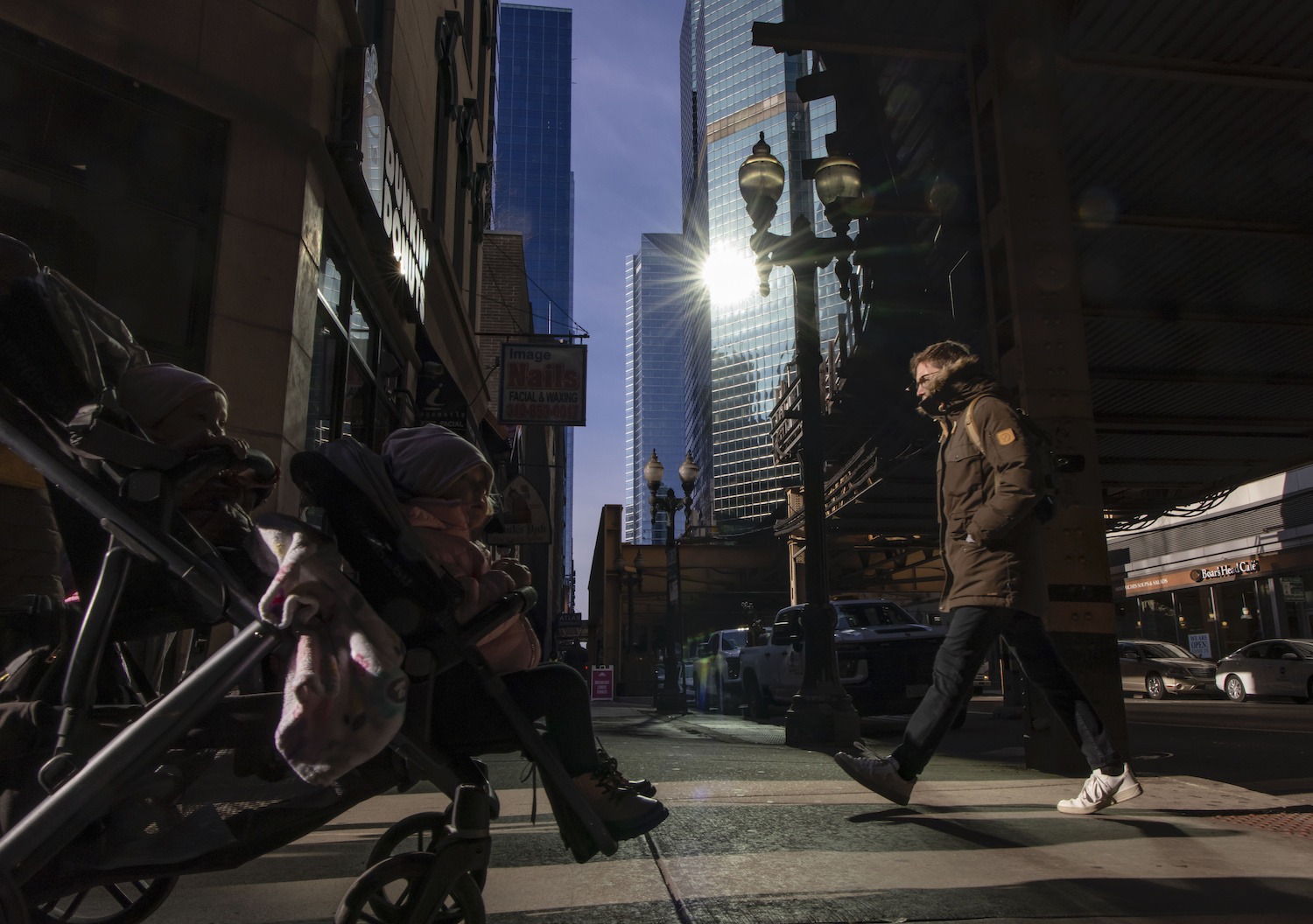According to the results of the last census, the Loop, which is bounded by the river, the lake, and Roosevelt Road, is Chicago’s fastest-growing neighborhood. In fact, since the turn of the century, the Loop’s population has increased 158 percent, from 16,388 to 42,298. Many of these people are newcomers to the city, who have chosen to make their homes in tony glass high rises featured in glossy architecture magazines, such as the Aqua Tower and the St. Regis.
Neighborhood life is the essence of the Chicago experience, but when Chicagoans talk of being from “the neighborhoods,” they’re usually talking about places such as Portage Park or Brighton Park, where American flags droop from the brickwork of bungalows.
Here is how newspaper columnist Mike Royko, himself a product of the neighborhoods, described the classic Chicago neighborhood in his book Boss: Richard J. Daley of Chicago:
“In every neighborhood could be found all the ingredients of the small town: the local tavern, the funeral parlor, the bakery, the vegetable store, the butcher shop, the neighborhood drunk, the neighborhood trollop, the neighborhood idiot, the neighborhood war hero, the neighborhood police station, the neighborhood team, the neighborhood sports star, the ball field, the barber shop, the pool hall, the clubs, and the main street.”
By that standard, is the Loop a neighborhood? The Loop has taverns (even a dive bar, the Sky Ride Tap), a funeral parlor, bakeries and vegetable stores, but it doesn’t have a public elementary school or a ball field, and my guess is it doesn’t have many drunks, trollops or idiots, either. Drunks, trollops and idiots can’t afford to live in a place where the average one-bedroom apartment rents for $2,075 a month, and the average home sells for $351,000.
(Royko would spend the 1980s satirizing lakefront condo dwellers who jogged, ate quiche, and drank cocktails in fern bars — probably because by then, he lived on Lake Shore Drive.)
Neither is the Loop a place where folks settle down, raise families, and pass property on to their children, the way they do in Chatham or Norwood Park. The Loop’s demographics are wildly different from the rest of the city’s: according to the Chicago Metropolitan Agency for Planning, 50 percent of Loop residences are occupied by one person; 49 percent of those residences were built in 2000 or later, and only 7.6 are single-family residential. As for the folks, 44.6 percent are between the ages of 20 and 34; 82.2 percent have at least a bachelor’s degree, and the median income is $108,676. According to this WBEZ map, only around 25 percent were born in Illinois. The Loop is a place for movers, shakers and strivers, not stay-at-homes or settlers.
Related Content
“Very rarely do I place families,” says Tristen Heimann, director of residential rentals at Luxury Living. “It’s either couples or singles. They live in the Loop for a mission.”
The Chicago Loop Alliance calls the Loop “Everyone’s Neighborhood.” That’s another strike. Many Chicagoans don’t like seeing outsiders in their neighborhoods, believing these trespassers will either gentrify it or turn it into a slum.
To answer the question, “Is the Loop a neighborhood?,” I called George Miller, founder of Chicago Loop Neighbors Association. Miller, a retired high school teacher, moved from Naperville to a condo at Wabash and Madison in 2004, to be close to the Loop’s cultural attractions: “My partner and I would go into the city for a concert, and then we’d drive home at twelve, one in the morning, and we thought we were going to end up in a ditch.”
“It’s definitely not a classic Chicago neighborhood,” Miller said. “Part of it is the vertical nature, also the scale, the number of people to the number of tourists. The Loop is an intentional neighborhood. You have to intentionally build your circuit out of the amenities that are there: music venues, opera, symphony, the Art Institute, shopping. The classic neighborhood would be ‘everything is there.’ You find your apartment and your house, and you ask, ‘Where do we go for pizza or groceries?’ In the Loop, you do the same, but it’s on a different scale. You see a lot of people, but it’s not always the same people.”
As the Loop has transformed from a place to work to a place to work and live, it has accrued the amenities of a neighborhood. When Miller moved there, he had to schlep his “bubba cart” on the ‘L’ to the South Loop Jewel. Now, there’s a Mariano’s across the street from Lake Shore East Park — a park dedicated in 2005 as a place for condo dwellers to walk their dogs on their daily trip outdoors. Miller predicts that the Loop will continue to grow more populous, and therefore, more neighborhoody: “With the shakeout of what it means to work in an office, there are more buildings available for residential conversion,” he said.
The Loop may not fit Mike Royko’s description of a neighborhood. It may be closer to a classic New York City neighborhood. Its emergence as the city’s newest neighborhood is a consequence of what an alderman once called the “Manhattanization” of Chicago: the wealthy colonizing the lakefront, and pushing poor folks into the suburbs. Chicago is always changing. As it changes, so does what constitutes a Chicago neighborhood. This isn’t Taylorville. We wouldn’t want to live here if it was.



